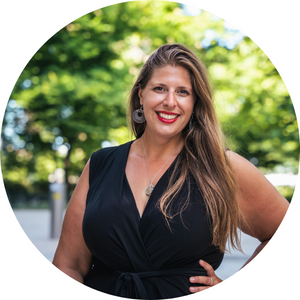What is the RDSP?
The RDSP is a registered savings account for Canadian residents with disabilities, ages 59 and under. It can be opened by a person with a disability or their parent or guardian (if they’re under 19) at most major banks.
Eligibility requirements aside, the primary features of the RDSP that separate it from other Registered Savings Plans, such as the RESP or RRSP, are three-fold:
- Anyone can contribute to an RDSP with written permission from the accountholder.
- The proceeds in an RDSP account are not considered income by most provinces and therefore do not affect an accountholder’s monthly disability benefit amount.
- Contributions to an RDSP can be matched by the federal government annually through either the Disability Savings Grant and/or The Disability Savings Bond. Whether you receive the grant, the bond or both (as well as how much you receive), depends on the household income reported on your annual tax return. You’re not entitled to the grant or bond past the age of 49.
You need to receive the Disability Tax Credit (DTC) to open an RDSP. According to the most recent statistical review released by the government based on data from 2017, the national take-up rate of the RDSP by DTC-eligible individuals was 31.17% (rising from 29% in 2016).
The low national take-up rate of the RDSP reflects a lack of public awareness, but it’s also attributed to the difficulty some experience qualifying for the DTC.
“I understand that you need a way to combat fraud, but in my opinion, way too many people are having to do way too much paperwork unnecessarily to justify the pain and angst that comes with a disability,” says Geoffrey Zaldin, co-founder of Special Needs Financial, a financial advice firm specializing in the RDSP.
Qualifying for the disability tax credit
To register for the DTC, download and fill out form T2201 before submitting it to the Canada Revenue Agency (CRA) for approval. You must meet one of the below criteria in order to qualify:
- You are legally blind;
- You are markedly restricted a significant period of time in one of these daily activities: speaking, hearing, walking, toileting, dressing, eating/preparing meals, mental functions (including interacting with others, remembering, making healthy decisions, etc.)
- You are not markedly restricted but still have significant restrictions in two or more of the activities listed in the bullets above (vision impairment counts as one of the two restrictions)
OR
- You require life-sustaining therapy at least three times or 14 hours per week and your disability is expected to last one year or more.
The CRA defines “Markedly restricted a significant period of time” as if you are unable, or it takes you an inordinate amount of time compared to a non-disabled person, to do one or more of the basic activities of daily living mentioned above even with therapy.
“Markedly restricted 90% of the time is a relatively high threshold. Just because someone is 75% restricted, doesn’t mean they don’t have additional expenses and shouldn’t be provided some measure of disability tax credit,” says Zaldin.
Canada’s Senate Committee on Social Affairs, Science and Technology released a report in June 2018 recommending the RDSP not be tied to the DTC because of its strict nature and one MP has proposed a bill relaxing the standards of the DTC.
As of March 2019, the bill has been introduced and is waiting for first reading, which could take up to a year. So with passage still a long way off, there are still strategies for getting approved for the DTC as it stands now. Including more detail about chronic symptoms, accommodations, and management will help the CRA get a fuller picture of the extent of your disability.
“It’s important to think about your functioning in comparison to the average person your age without your restrictions. For example, walking: if you walk slower than the average person, if you are unable to walk very long without a break or if you use an assistive device, these are all things you should put in your application in as much detail as possible,” says Cynthia Minh, Access RDSP program manager at Disability Alliance BC.
Minh also recommends keeping detailed notes on your functionality, so you can present them to the medical practitioner who must verify your function level. It’s best to work with a practitioner who is familiar with you personally, but you can always approach an organization like Disability Alliance BC if you need help filling out the form. Just make sure they’re non-profit.
“Some companies charge a fee or take a percentage of any money you recover from your DTC or RDSP in exchange for their help,” adds Minh.
RDSP Grants and Bonds
Everyone under 49 who opens an RDSP is automatically eligible for the grant or the bond (depending on their net family income).
The Canada disability savings grant (CDSG)
The CDSG is a matching benefit of 100%, 200% or 300% up to $3,500 annually and $70,000 in total.
When net family income is $93,208 or less, the government puts in $3 for every $1 of the first $500 you contribute (a grant of up to $1,500 annually). They then contribute $2 for every $1 of the next $1,000 you contribute (a grant of up to $2,000 annually).
When net family income is $93,208 or more, the government matches the first $1,000, dollar for dollar.
The Canada disability savings bond (CDSB)
The CDSB, a $1,000 annual bond for 20 years (lifetime total of $20,000), is available from the government on top of the CDSG, without requiring you to contribute any additional funds. It’s available to those whose family net income is less than $30,450. If your family net income is between $30,450 and $46,605, you get a prorated partial bond based on the formula in The Disability Savings Act.
Both the bond and the grant can be retroactively claimed for up to 10 years, for as long as you would have been eligible for them. You cannot receive more than $10,500 in retroactive grants and you cannot receive more than $11,000 in retroactive bonds annually.
Maximizing your RDSP
“Ideally, contribute as much as you can as quickly as you can, while still maximizing the grant entitlement,” says Zaldin.
Helene Eschbach is an RDSP advisor with the Disability Planning Helpline; her son is 33 and has had the RDSP for 11 years. “We will continue to put money into the RDSP until he reaches age 42. Once he reaches 42, we’ll have maxed out on contributions, grants and bonds,” she says.
Eschbach’s son qualifies for the $1,000 bond each year and they’re putting in the ideal annual contribution of $1,500, so he’s also getting the full $3,500 in annual grants. When he’s 42 he’ll reach the contribution limit of $200,000, plus the $70,000 in grants and the $20,000 in bonds. This maximum total of $290,000 accumulates on a tax-deferred basis. RDSPs can also be invested in GICs, mutual funds, stocks, bonds and ETFs, so his money may grow even more depending on his risk tolerance and time horizon.
“Unless it’s a substantial GIC rate of 6-7%, I believe you’d do much better with a diversified portfolio of stocks or mutual funds. What matters is your net return,” says Zaldin.
You can find out the estimated future value of your RDSP with this free calculator.
Withdrawing money from the RDSP
You can take money out of your RDSP at any age, but you will have to pay a penalty if you take it out within 10 years of receiving a grant or bond.
“Anytime you get any grant or bond money from the government, it resets that 10 years and anytime you take anything out, they will take back any grant or bond they gave you within the last 10 years,” says Zaldin.
You can withdraw money without penalty after the 10 years from your last grant or bond elapse at any age. However, Lifetime Disability Assistance payments begin coming out in the form of annual cheques automatically without penalty at the end of the year you turn 60, regardless of whether you took payments out earlier, until the account is drained.
If the government contributed more than you, you can withdraw 10% of what’s in the account per year or the money in your RDSP divided by the number of years until you turn 83. The money is parsed out annually by the government in such a way that it’s meant to last the rest of your life or until there is no money left in the RDSP.
Set for the future
Navigating the rules of the RDSP can be confusing and restrictive. But if you’re a person with a disability who’s able to maximize your contributions, grants and bonds, it may give you the opportunity for greater financial comfort.







